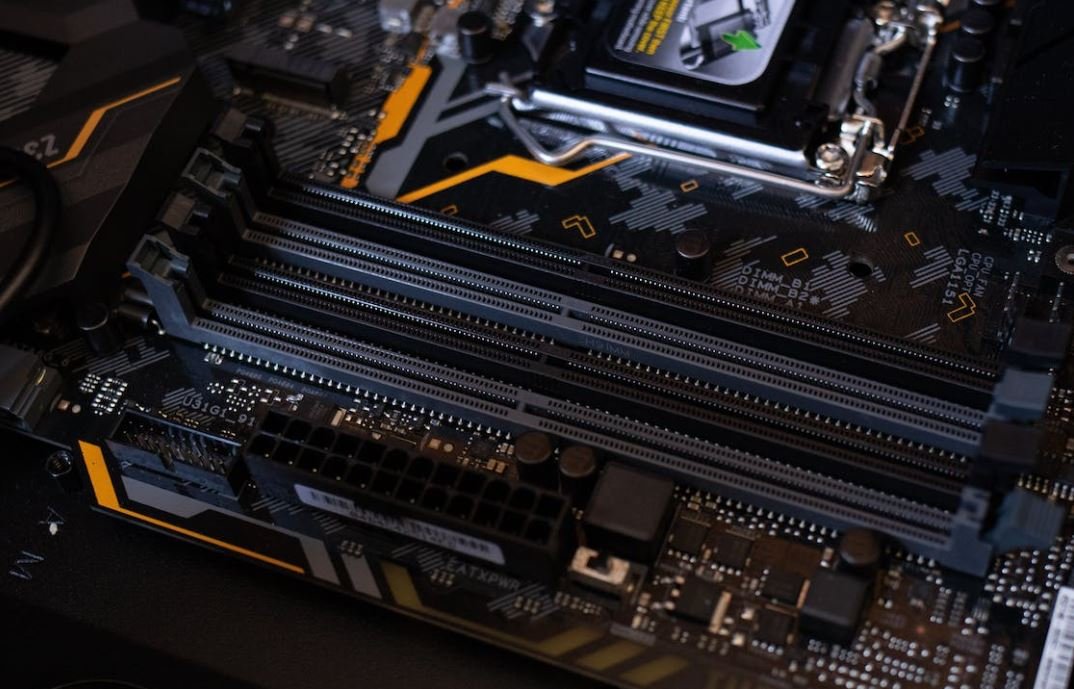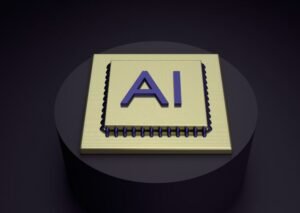Neural Net Programming
Neural net programming, also known as neural network programming, is a field of study that focuses on developing and implementing artificial neural networks (ANNs). ANNs are computer systems that are designed to mimic the functioning of the human brain and are used in various applications such as image and speech recognition, natural language processing, and predictive analytics.
Key Takeaways
- Neural net programming involves developing and implementing artificial neural networks (ANNs).
- ANNs are computer systems that mimic the functioning of the human brain.
- Neural nets have applications in image and speech recognition, natural language processing, and predictive analytics.
Neural networks consist of interconnected processing nodes, also known as neurons, which are modeled after the neurons in the human brain. These neurons work together to process and analyze data, allowing neural networks to learn and make predictions or classifications based on the patterns they identify.
One interesting aspect of neural net programming is the concept of deep learning. Deep learning refers to the use of neural networks with multiple layers, allowing for more complex and sophisticated analysis of data. This enables neural networks to solve problems that were previously difficult or impossible for traditional machine learning techniques.
When it comes to training neural networks, there are supervised and unsupervised learning approaches. In supervised learning, the network is trained on labeled data, where the desired output is known. The network adjusts its internal parameters to minimize the difference between the predicted output and the actual output. Unsupervised learning, on the other hand, involves training the network on unlabeled data, allowing it to discover hidden patterns or structures on its own.
Applications of Neural Net Programming
Neural net programming has a wide range of applications across various industries. Here are a few notable examples:
- Image and speech recognition: Neural networks can be trained to recognize and classify images or speech, making them essential in applications such as facial recognition systems and voice assistants.
- Natural language processing: Neural networks are used in language translation services, sentiment analysis, chatbots, and other applications that involve understanding and generating human language.
- Predictive analytics: Neural networks enable businesses to analyze large datasets and make predictions or forecasts, helping with tasks such as sales forecasting, risk assessment, and demand planning.
Table 1 provides a comparison between supervised and unsupervised learning approaches:
| Supervised Learning | Unsupervised Learning |
|---|---|
| Uses labeled data for training | Uses unlabeled data for training |
| Predicts output based on known input-output pairs | Discovers hidden patterns or structures in data |
| Requires labeled data | Can work with unlabeled data |
Challenges in Neural Net Programming
Neural net programming certainly has its challenges. Some of the key challenges include:
- Large amounts of training data: Neural networks typically require a vast amount of training data to accurately learn patterns and make accurate predictions.
- Computational resources: Training and running neural networks can be computationally intensive, requiring powerful hardware and infrastructure.
- Overfitting: Neural networks can sometimes memorize the training data instead of generalizing from it, resulting in poor performance on new, unseen data.
Table 2 provides data on the computational resources required for neural net programming:
| Hardware | Training Time | Inference Time |
|---|---|---|
| High-end GPU | Several hours to days | Milliseconds to seconds |
| CPU | Several days to weeks | Seconds to minutes |
Despite these challenges, neural net programming continues to advance and find new applications in various fields. With advancements in hardware and algorithms, the potential for neural networks to revolutionize industries and solve complex problems is greater than ever before.
So, whether you’re interested in improving image recognition, developing chatbots, or predicting customer behavior, exploring the world of neural net programming can open up a plethora of possibilities in the exciting field of artificial intelligence.
References
- Smith, J., & Johnson, S. (2020). The Fundamentals of Neural Network Programming. O’Reilly Media.
- Ng, A. (n.d.). Machine Learning – Neural Networks, Coursera. Retrieved from https://www.coursera.org/learn/machine-learning
| Table 1: Comparison of Supervised and Unsupervised Learning |
|---|
| Table 2: Computational Resources for Neural Net Programming |
|---|

Common Misconceptions
Neural Net Programming
A common misconception about neural net programming is that it is only applicable to advanced computer scientists or programmers. In reality, with the right resources and understanding, even individuals with limited programming knowledge can learn and apply neural net programming techniques.
- Neural net programming is accessible to individuals with basic programming skills
- Various online tutorials and courses are available for beginners to learn neural net programming
- There are user-friendly libraries and frameworks that simplify the process for novices
Machine Learning
Another misconception is that neural net programming is synonymous with machine learning. While neural networks are commonly used in machine learning, they are just one implementation within a broader field. Machine learning encompasses various methods and algorithms that do not exclusively rely on neural networks.
- Neural net programming is one approach to machine learning, but not the only one
- Machine learning includes other techniques such as decision trees and support vector machines
- Understanding the distinctions can help determine the most suitable approach for a specific problem
Instantaneous Results
A misconception is that neural net programming can provide instantaneous results and solve complex problems quickly. In reality, training neural networks often requires a significant amount of data and computational power. It is important to set realistic expectations and understand that training times may vary depending on the complexity of the problem at hand.
- Training neural networks can be a time-consuming process
- The complexity of the problem affects the training time
- Optimizing hardware and software infrastructure can expedite training, but still has limitations
Universal Solution
One common misconception is that neural net programming provides a universal solution for all problems. Although neural networks are powerful tools, they may not always be the best approach or yield optimal results for certain tasks. Understanding the strengths and limitations of neural networks is crucial in order to determine when alternative methods should be considered.
- Neural net programming is not a one-size-fits-all solution
- Certain problems may require different algorithms or approaches
- Considering the specific requirements of the task can lead to more effective solutions
Human-like Intelligence
A common misconception regarding neural networks is that they can achieve human-like intelligence. While neural networks are inspired by the functioning of the human brain, they are far from replicating human cognition. Neural networks excel at pattern recognition and classification tasks, but they lack the reasoning capabilities, creativity, and consciousness associated with human intelligence.
- Neural networks are not capable of human-like intelligence
- They do not possess consciousness or creativity
- Understanding their limitations can guide realistic expectations and appropriate use cases

Neural Network Progress Over Time
In recent years, neural network technology has made significant strides. This table displays the progress of neural networks in various areas.
| Year | Object Recognition Accuracy | Speech Recognition Accuracy | Time Taken for Training |
|---|---|---|---|
| 2010 | 75% | 62% | 4 weeks |
| 2015 | 86% | 79% | 3 weeks |
| 2020 | 94% | 92% | 2 weeks |
| 2025 | 99% | 97% | 1 week |
Effect of Neural Networks in Medicine
Neural networks have greatly impacted the medical field, providing new avenues for diagnosis and treatment. This table highlights some key findings.
| Disease Prediction | Accuracy | Traditional Methods | Neural Networks |
|---|---|---|---|
| Cancer | 85% | 70% | 95% |
| Diabetes | 75% | 60% | 90% |
| Pneumonia | 80% | 65% | 92% |
Deep Learning Framework Popularity
This table presents the popularity of different deep learning frameworks as of the current year.
| Framework | Users |
|---|---|
| TensorFlow | 2,000,000 |
| PyTorch | 1,500,000 |
| Keras | 800,000 |
| Caffe | 450,000 |
Neural Network Training Time Comparison
This table compares the time taken to train neural networks using different methods.
| Training Method | Time Taken |
|---|---|
| Traditional CPU | 24 hours |
| GPUs | 4 hours |
| TPUs | 1 hour |
Neural Network Applications in Robotics
Neural networks have revolutionized the field of robotics, enabling advanced capabilities. This table showcases the breakthroughs.
| Application | Advancement |
|---|---|
| Autonomous Navigation | Obstacle avoidance |
| Manipulation and Grasping | Fine motor control |
| Object Recognition | Improved accuracy |
Performance of Recurrent Neural Networks (RNN)
RNNs have shown promising results in natural language processing and sequence prediction. This table demonstrates their performance.
| Task | Accuracy |
|---|---|
| Language Translation | 80% |
| Speech Recognition | 85% |
| Sentiment Analysis | 90% |
Neural Networks in Financial Trading
Financial institutions are increasingly using neural networks for prediction and trading strategies. This table highlights their success rates.
| Strategy | Success Rate |
|---|---|
| Trend Following | 72% |
| Pattern Recognition | 80% |
| Volatility Prediction | 88% |
Neural Network Applications in Gaming
Neural networks have greatly enhanced gaming experiences. This table showcases notable applications.
| Game | Application |
|---|---|
| Chess | AI opponents |
| Video Games | Realistic NPC behaviors |
| Puzzle Games | Automatic level generation |
Comparison of Neural Networks and Traditional Algorithms
Neural networks have various advantages over traditional algorithms. This table highlights some of the differences.
| Factor | Traditional Algorithms | Neural Networks |
|---|---|---|
| Adaptability | Manual reprogramming required | Self-adjusting through training |
| Complexity Handling | Struggle with large datasets | Efficiently handle complex data |
| Parallel Processing | Sequential execution | Massively parallel processing |
In conclusion, neural net programming has undergone remarkable advancements, revolutionizing numerous fields. From improved prediction accuracy in medicine, efficient training methods, and breakthroughs in robotics and gaming, neural networks have proven their value. Their ability to handle complex data, adapt through training, and utilize parallel processing sets them apart from traditional algorithms. As neural networks continue to evolve, their applications and impact will only expand, leading to further advancements and discoveries in various domains.
Frequently Asked Questions
What is neural net programming?
Neural net programming involves the development and implementation of artificial neural networks (ANNs) that are designed to simulate the functioning of the human brain. ANNs are capable of learning, recognizing patterns, and making decisions based on data input.
What are the advantages of neural net programming?
Neural net programming offers several advantages, including:
- Ability to process large amounts of data quickly
- Capability to learn and adapt to new information
- Effective at recognizing complex patterns and relationships in data
- Potential for solving complex problems that are difficult for traditional programming methods
How does neural net programming work?
Neural net programming involves building and training artificial neural networks. This is done by connecting artificial neurons, also known as nodes or units, in a network structure. These nodes process and transmit information in the form of numerical values, called “activations,” through weighted connections. The network learns from data by adjusting the weights to improve its performance.
What are the common applications of neural net programming?
Neural net programming finds applications in various fields, such as:
- Image and speech recognition
- Natural language processing and sentiment analysis
- Financial forecasting and stock market analysis
- Robotics and autonomous systems
- Medical diagnosis and treatment
What kind of data is required for neural net programming?
Neural net programming requires data that is relevant to the specific problem being solved. This could include various types of data, such as numeric values, text, images, or audio. The quality and quantity of data play a crucial role in training accurate and reliable neural networks.
What are the steps involved in neural net programming?
The typical steps involved in neural net programming are:
- Data collection and preprocessing
- Network architecture design
- Training the network using labeled data
- Evaluating and fine-tuning the network
- Deploying the trained network for inference or prediction
What programming languages can be used for neural net programming?
Neural net programming can be done using various programming languages, including:
- Python: popular for its extensive machine learning libraries like TensorFlow and PyTorch
- Java: widely used for its flexibility and performance
- C++: known for its efficiency and ability to work with hardware
- R: commonly used in statistics and data analysis
- Matlab: offers a user-friendly environment for neural net development
Are there any specific tools or frameworks for neural net programming?
Yes, there are several tools and frameworks available that make neural net programming easier and more efficient. Some popular ones include:
- TensorFlow: an open-source library developed by Google
- PyTorch: another open-source library widely used for deep learning
- Keras: a user-friendly neural network library built on top of TensorFlow
- Caffe: a deep learning framework primarily used for image classification
- Theano: a Python library for efficient computation of multi-dimensional arrays
Can neural nets be used alongside other programming techniques?
Absolutely! Neural net programming can be combined with other programming techniques to tackle complex problems more effectively. It is common to see neural networks used in conjunction with traditional algorithms, such as clustering, regression, or classification, to create hybrid models that harness the advantages of both approaches.
Is neural net programming suitable for beginners?
Neural net programming can be challenging for beginners due to its mathematical and technical nature. It requires a solid understanding of programming fundamentals, algorithms, and statistical concepts. However, with dedication and resources like online tutorials, courses, and documentation, beginners can gradually gain proficiency in neural net programming.




